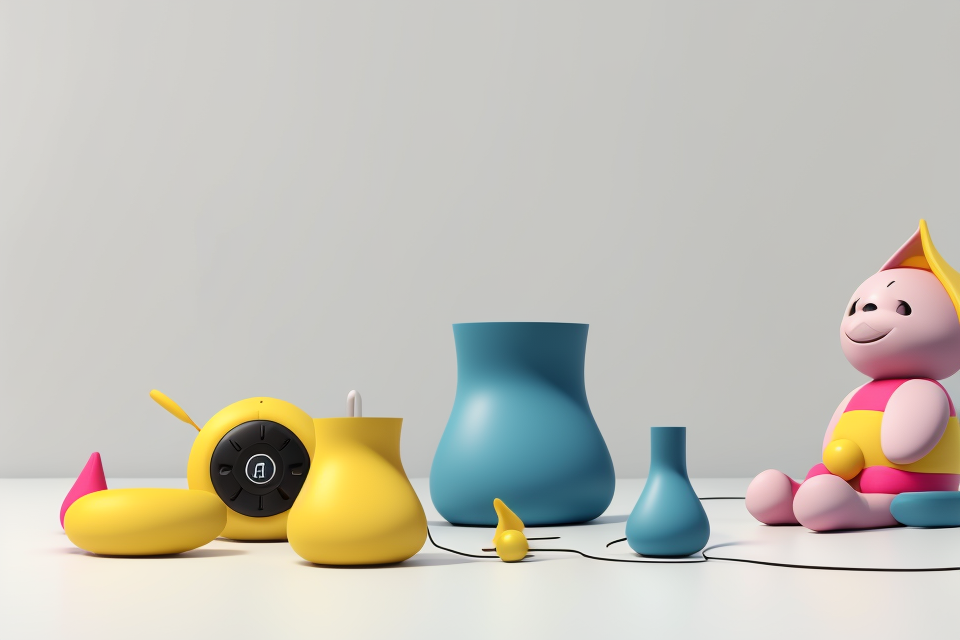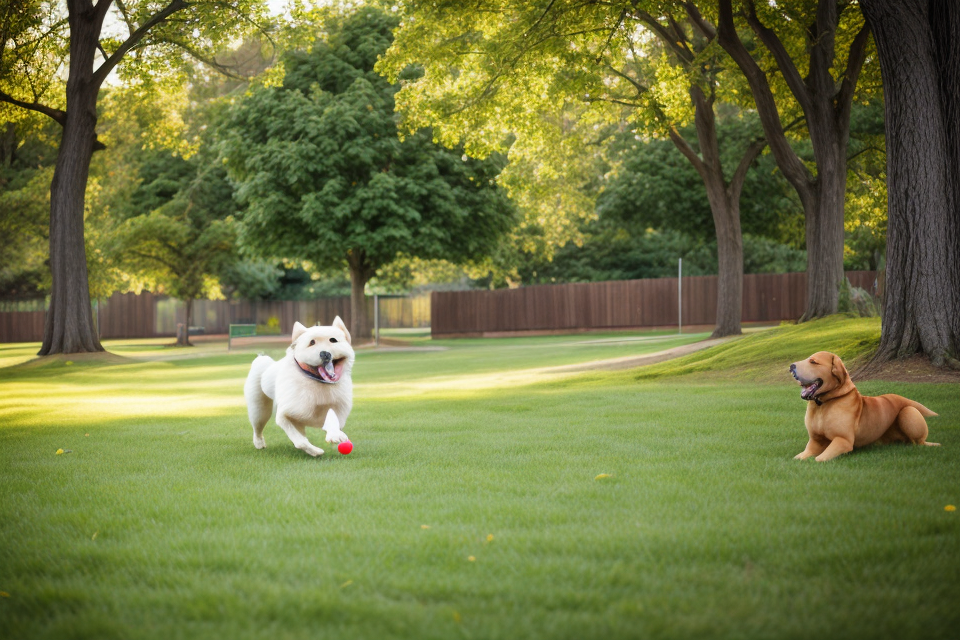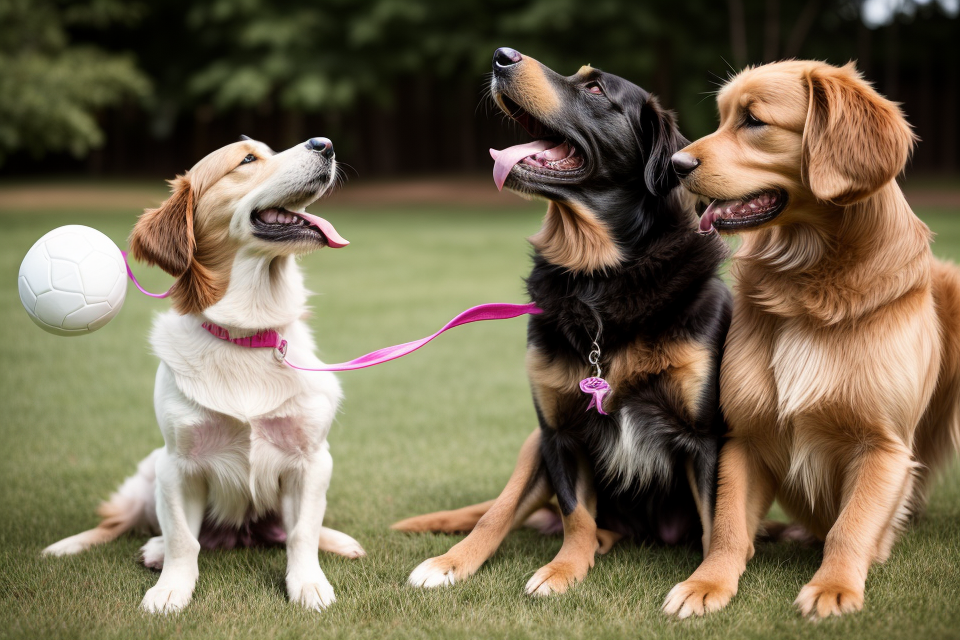Dogs are known to be man’s best friend, and it’s no surprise that we want to give them the best possible care. One aspect of their care is providing them with toys. But, have you ever wondered if dogs really need squeaky toys? In this article, we will explore the pros and cons of giving your furry friend a squeaky toy. Some may argue that squeaky toys provide mental stimulation and keep dogs entertained, while others may say that they can cause frustration and stress. So, let’s dive in and find out if it’s necessary for dogs to have squeaky toys.
While squeaky toys can be a fun and entertaining option for dogs, they are not necessary for their well-being. Dogs can have just as much fun with toys that don’t make noise, such as rubber balls or ropes. However, if a dog enjoys squeaky toys and they provide a source of mental stimulation and relief from boredom, then they can be a worthwhile addition to a dog’s toy collection. Ultimately, it depends on the individual dog’s preferences and needs.
Benefits of squeaky toys for dogs
Mental stimulation
Problem-solving skills
Squeaky toys can help dogs develop their problem-solving skills. By manipulating the toy to get it to squeak, dogs are challenged to figure out how to make the toy produce the desired sound. This can be mentally stimulating for dogs and help keep them engaged and entertained.
Scent work
Squeaky toys can also be used in scent work. Some dog owners hide small pieces of food or treats inside the toy, and then challenge their dogs to find them. This can be a fun and engaging activity for dogs, and it can also help them develop their sense of smell.
Obsession and compulsion
Finally, squeaky toys can be addictive for dogs. The sound of the squeaker can be so enticing that dogs will continue to play with the toy, even after they have succeeded in getting the squeaker out. This can be a great way to keep dogs occupied and engaged, especially if they are prone to anxiety or destructive behavior.
Physical exercise
Dogs are known for their energy and playfulness, and providing them with the right toys can help them burn off excess energy and stay physically fit. Squeaky toys are a popular choice among dog owners because they are entertaining for dogs and can help provide them with the physical exercise they need.
Chewing and biting
One of the main benefits of squeaky toys for dogs is that they provide an outlet for their natural instinct to chew and bite. Chewing and biting are important behaviors for dogs, as they help to keep their teeth and jaws strong. Squeaky toys are designed to be chewed on, and they can provide dogs with the satisfaction of satisfying their natural instincts.
Play-hunting
Squeaky toys also provide dogs with the opportunity to engage in play-hunting, which is a natural behavior for dogs. Play-hunting involves chasing and pouncing on prey, and it helps dogs to stay physically active and mentally stimulated. Squeaky toys can be used to simulate the experience of hunting, as dogs will chase after the toy and try to get it to squeak.
Puzzle toys
In addition to providing dogs with the opportunity to chew and bite, squeaky toys can also be used as puzzle toys. Many squeaky toys are designed with small openings or hidden compartments that dogs can use their problem-solving skills to figure out. This can help to keep dogs mentally stimulated and engaged, and it can also help to prevent boredom and destructive behavior.
Overall, squeaky toys can provide dogs with the physical exercise they need to stay healthy and happy. Whether they are chewing, biting, or solving puzzles, squeaky toys can help to keep dogs entertained and engaged, and they can be a valuable addition to any dog’s toy box.
Potential drawbacks of squeaky toys for dogs
Overstimulation
Sensory overload
Dogs are known to have a heightened sense of smell, which can be stimulated by the presence of a squeaky toy. The toy’s unique scent, combined with the movement and noise it produces, can be incredibly attractive to a dog. This heightened sensory experience can lead to sensory overload, particularly in smaller dogs or older dogs who may not have the same capacity for stimulation as younger dogs. Sensory overload can manifest in different ways, such as excessive barking, pacing, or even aggression, and it is important for dog owners to monitor their pets’ behavior when introducing new toys to avoid this issue.
Destructive chewing
Squeaky toys, especially those made of plastic, can be damaging to a dog’s teeth and gums. The constant chewing and biting can cause wear on the teeth, leading to dental problems down the line. Additionally, the toys can be swallowed, leading to digestive issues and potentially dangerous blockages. While squeaky toys can provide mental stimulation for dogs, it is important to ensure that they are used in moderation and that owners monitor their pets’ behavior to prevent destructive chewing.
Safety concerns
When it comes to squeaky toys for dogs, there are several safety concerns that pet owners should be aware of. Some of these concerns include:
- Swallowing pieces: One of the main safety concerns with squeaky toys is that dogs may swallow pieces of the toy, which can cause blockages in their digestive system. This is particularly true for smaller dogs, who may be more likely to swallow pieces of the toy whole.
- Toxic materials: Some squeaky toys may contain toxic materials, such as lead or cadmium, which can be harmful to dogs if ingested. It’s important to carefully choose squeaky toys that are made with safe, non-toxic materials.
Additionally, some dogs may become obsessed with the sound of the squeaker and try to remove it from the toy, which can pose a choking hazard. It’s important to supervise dogs when they are playing with squeaky toys and to remove the toy if it becomes damaged or if the squeaker is exposed.
Overall, while squeaky toys can be a fun and engaging toy option for dogs, it’s important to be aware of the potential safety concerns and to choose toys made with safe, non-toxic materials. Pet owners should also supervise their dogs when they are playing with squeaky toys and remove the toy if it becomes damaged or if the squeaker is exposed.
Alternatives to squeaky toys for dogs
Other types of toys
While squeaky toys can be a fun and engaging option for dogs, they are not the only type of toy available. There are many other options that can provide dogs with the mental and physical stimulation they need to stay happy and healthy.
Rope toys
Rope toys are a popular alternative to squeaky toys for dogs. They are made from soft, durable rope and come in a variety of shapes and sizes. Rope toys are great for dogs that like to chew, as they can help satisfy their natural instinct to chew without damaging their teeth or mouth. They are also easy to carry around and can be thrown for playtime fun.
Plush toys
Plush toys are another popular alternative to squeaky toys for dogs. They come in a variety of shapes and sizes, from small stuffed animals to large, soft blankets. Plush toys are great for dogs that like to cuddle and snuggle, as they can provide a comfortable and cozy place to rest. They are also a good option for dogs that are recovering from an injury or surgery, as they can provide a soft and soothing place to rest.
Tug toys
Tug toys are a great option for dogs that love to play fetch and tug-of-war. They come in a variety of shapes and sizes, from small rope toys to large plush animals. Tug toys are great for dogs that like to play fetch, as they can help improve their fetching skills and provide mental stimulation. They are also a good option for dogs that like to play tug-of-war, as they can provide a fun and engaging way to play the game.
Training and socialization
Positive reinforcement
One alternative to providing dogs with squeaky toys is to focus on positive reinforcement training. This method involves rewarding desired behaviors rather than punishing undesired ones. By using treats, praise, and affection to reinforce good behavior, dogs can learn what actions are expected of them and develop desirable habits.
Interaction with other dogs
Another alternative to squeaky toys is to encourage interaction with other dogs. Socialization is an important aspect of a dog’s well-being, as it helps them develop important social skills and reduces the likelihood of behavioral problems. Owners can facilitate these interactions by taking their dogs to parks, dog parks, or even just having playdates with other dogs. Additionally, dog training classes or playgroups can provide opportunities for dogs to socialize with their peers and learn appropriate behaviors.
Natural ways to entertain dogs
Walks and hikes
Walks and hikes are excellent ways to entertain dogs as they provide physical exercise and mental stimulation. These activities can help to improve a dog’s overall health and well-being.
Play sessions with owners
Play sessions with owners are also an excellent way to entertain dogs. Interactive play can help to strengthen the bond between the dog and the owner, while also providing mental stimulation and physical exercise.
Nose work and scent work
Nose work and scent work are other natural ways to entertain dogs. These activities involve using a dog’s sense of smell to find hidden objects or complete tasks. This type of mental stimulation can be highly enjoyable for dogs and can help to improve their problem-solving skills.
In addition to these natural ways to entertain dogs, there are also a variety of other activities that can be incorporated into a dog’s daily routine, such as swimming, agility training, and obedience training. The key is to find activities that are enjoyable for the dog and that provide both physical and mental stimulation.
Factors to consider when choosing toys for dogs
Size and age of the dog
Puppies
Puppies, especially those under six months of age, require toys that are safe, soft, and easy to grasp. Squeaky toys, although fun for older dogs, may be too loud and potentially harmful to a puppy’s sensitive ears. Instead, consider purchasing toys made from soft materials such as rubber or plush fabrics, and avoid those with small parts that can be easily swallowed.
Adult dogs
Adult dogs, depending on their size and breed, may enjoy a variety of toys. For larger dogs, it is important to choose toys that are durable and can withstand their strong bites. Squeaky toys may be appropriate for these dogs, but it is important to ensure that they are well-made and cannot be easily destroyed. Additionally, adult dogs may enjoy interactive toys such as puzzle toys that challenge their problem-solving skills.
Senior dogs
Senior dogs may have different needs than younger dogs. They may require toys that are easier to grasp and manipulate due to physical limitations. Squeaky toys may still be enjoyed by senior dogs, but it is important to choose ones that are low-stimulation and do not cause excessive noise levels. Additionally, soft and plush toys may be more comfortable for senior dogs with arthritis or other age-related health issues.
Budget and availability
Cost
When it comes to providing toys for dogs, it is important to consider the cost. Some toys can be quite expensive, while others are more affordable. It is important to find a balance between providing toys that are durable and enjoyable for the dog without breaking the bank. Some options to consider include purchasing toys on sale or looking for deals, buying toys in bulk, or opting for cheaper alternatives such as rope toys or old t-shirts.
Accessibility
Accessibility is another factor to consider when choosing toys for dogs. Some toys may be difficult for dogs to access, especially for smaller dogs or dogs with mobility issues. It is important to choose toys that are appropriate for the dog’s size and ability level. Additionally, if the dog is prone to chewing or destroying toys, it may be necessary to invest in more durable toys that can withstand their playstyle.
It is also important to consider the availability of toys. Some dogs may become attached to certain toys and may require a steady supply of them. If the toys are not readily available, the dog may become frustrated or bored. It is important to have a variety of toys on hand and to regularly rotate the selection to keep the dog engaged and interested.
Final thoughts and recommendations
While squeaky toys can be entertaining for dogs, they are not the only type of toy that can provide enjoyment and mental stimulation. When choosing toys for dogs, it is important to consider their age, size, and individual preferences. For example, puppies may enjoy interactive toys that encourage play and socialization, while older dogs may prefer more challenging toys that provide mental stimulation.
In addition to considering the age and size of the dog, it is also important to take into account any physical limitations or health concerns. For example, dogs with teeth or joint issues may benefit from toys that are soft and easy to chew, while dogs with high energy levels may need toys that provide plenty of exercise and mental stimulation.
Overall, it is recommended to provide dogs with a variety of toys that cater to their individual needs and preferences. This may include a mix of interactive, chew, and puzzle toys, as well as a range of textures and materials. By providing a diverse selection of toys, dog owners can help ensure that their pets remain engaged and entertained for hours on end.
FAQs
1. Why are squeaky toys popular among dogs?
Squeaky toys are popular among dogs because they are interactive and provide mental stimulation. The squeaking sound is like a challenge for dogs, and they love to chase after the sound and try to get the toy to squeak again. Additionally, the small size and soft texture of squeaky toys make them easy for dogs to carry and toss around.
2. Are squeaky toys necessary for dogs?
No, squeaky toys are not necessary for dogs. Dogs can be just as happy with traditional rubber or rope toys. However, squeaky toys can provide additional mental stimulation and entertainment for dogs, especially if they are left alone for long periods of time.
3. Can squeaky toys be harmful to dogs?
If dogs chew on the squeaker inside the toy, it can potentially cause choking or blockages. Therefore, it is important to monitor your dog when they are playing with squeaky toys and to replace the toy if the squeaker is damaged.
4. Can squeaky toys be used as rewards during training?
Yes, squeaky toys can be used as rewards during training. Dogs love the sound of the squeaker and will associate the toy with positive reinforcement. However, it is important to use them sparingly and to switch to other types of rewards or toys to prevent your dog from becoming too reliant on squeaky toys.
5. How many squeaky toys should I give my dog?
It is not necessary to give your dog multiple squeaky toys. One or two toys should be sufficient, especially if you rotate them regularly to keep them interesting. Too many toys can overwhelm your dog and create chaos in your home.
6. Can squeaky toys be used for all dogs?
Squeaky toys can be used for most dogs, but it is important to consider your dog’s size and strength. Large dogs may be able to easily destroy squeaky toys, while small dogs may have difficulty carrying them. Additionally, some dogs may be fearful or anxious around loud noises, so it is important to monitor their reaction to the squeaker.



